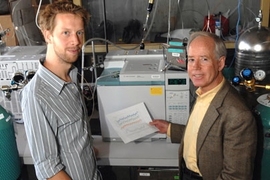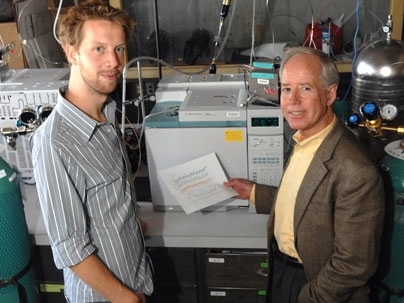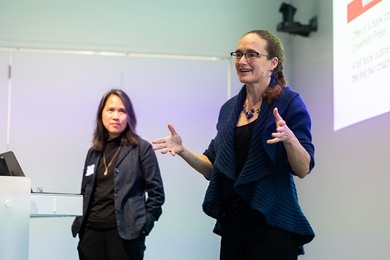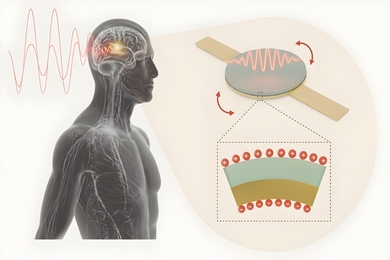The amount of methane in Earth's atmosphere shot up in 2007, bringing to an end a period of about a decade in which atmospheric levels of the potent greenhouse gas were essentially stable, according to a team led by MIT researchers.
Methane levels in the atmosphere have more than tripled since pre-industrial times, accounting for around one-fifth of the human contribution to greenhouse gas-driven global warming. Until recently, the leveling off of methane levels had suggested that the rate of its emission from the Earth's surface was approximately balanced by the rate of its destruction in the atmosphere.
However, since early 2007 the balance has been upset, according to a paper on the new findings being published this week in Geophysical Review Letters. The paper's lead authors, postdoctoral researcher Matthew Rigby and Ronald Prinn, the TEPCO Professor of Atmospheric Chemistry in MIT's Department of Earth, Atmospheric and Planetary Science, say this imbalance has resulted in several million metric tons of additional methane in the atmosphere. Methane is produced by wetlands, rice paddies, cattle, and the gas and coal industries, and is destroyed by reaction with the hydroxyl free radical (OH), often referred to as the atmosphere's "cleanser."
One surprising feature of this recent growth is that it occurred almost simultaneously at all measurement locations across the globe. However, the majority of methane emissions are in the Northern Hemisphere, and it takes more than one year for gases to be mixed from the Northern Hemisphere to the Southern Hemisphere. Hence, theoretical analysis of the measurements shows that if an increase in emissions is solely responsible, these emissions must have risen by a similar amount in both hemispheres at the same time.
A rise in Northern Hemispheric emissions may be due to the very warm conditions that were observed over Siberia throughout 2007, potentially leading to increased bacterial emissions from wetland areas. However, a potential cause for an increase in Southern Hemispheric emissions is less clear.
An alternative explanation for the rise may lie, at least in part, with a drop in the concentrations of the methane-destroying OH. Theoretical studies show that if this has happened, the required global methane emissions rise would have been smaller, and more strongly biased to the Northern Hemisphere. At present, however, it is uncertain whether such a drop in hydroxyl free radical concentrations did occur because of the inherent uncertainty in the current method for estimating global OH levels.
To help pin down the cause of the methane increase, Prinn said, "the next step will be to study this using a very high-resolution atmospheric circulation model and additional measurements from other networks." But doing that could take another year, he said, and because the detection of increased methane has important consequences for global warming the team wanted to get these initial results out as quickly as possible.
"The key thing is to better determine the relative roles of increased methane emission versus an idecrease in the rate of removal," Prinn said. "Apparently we have a mix of the two, but we want to know how much of each" is responsible for the overall increase.
It is too early to tell whether this increase represents a return to sustained methane growth, or the beginning of a relatively short-lived anomaly, according to Rigby and Prinn. Given that, pound for pound, methane is 25 times more powerful as a greenhouse gas than carbon dioxide, the situation will require careful monitoring in the near future.
In addition to Rigby and Prinn, the study was carried out by researchers at Commonwealth Scientific and Industrial Research Organization (CSIRO), Georgia Institute of Technology, University of Bristol and Scripps Institution of Oceanography. These methane measurements come from the Advanced Global Atmospheric Gases Experiment (AGAGE) that is supported by the National Aeronautics and Space Administration (NASA), and the Australian CSIRO network.
A version of this article appeared in MIT Tech Talk on October 29, 2008 (download PDF).









